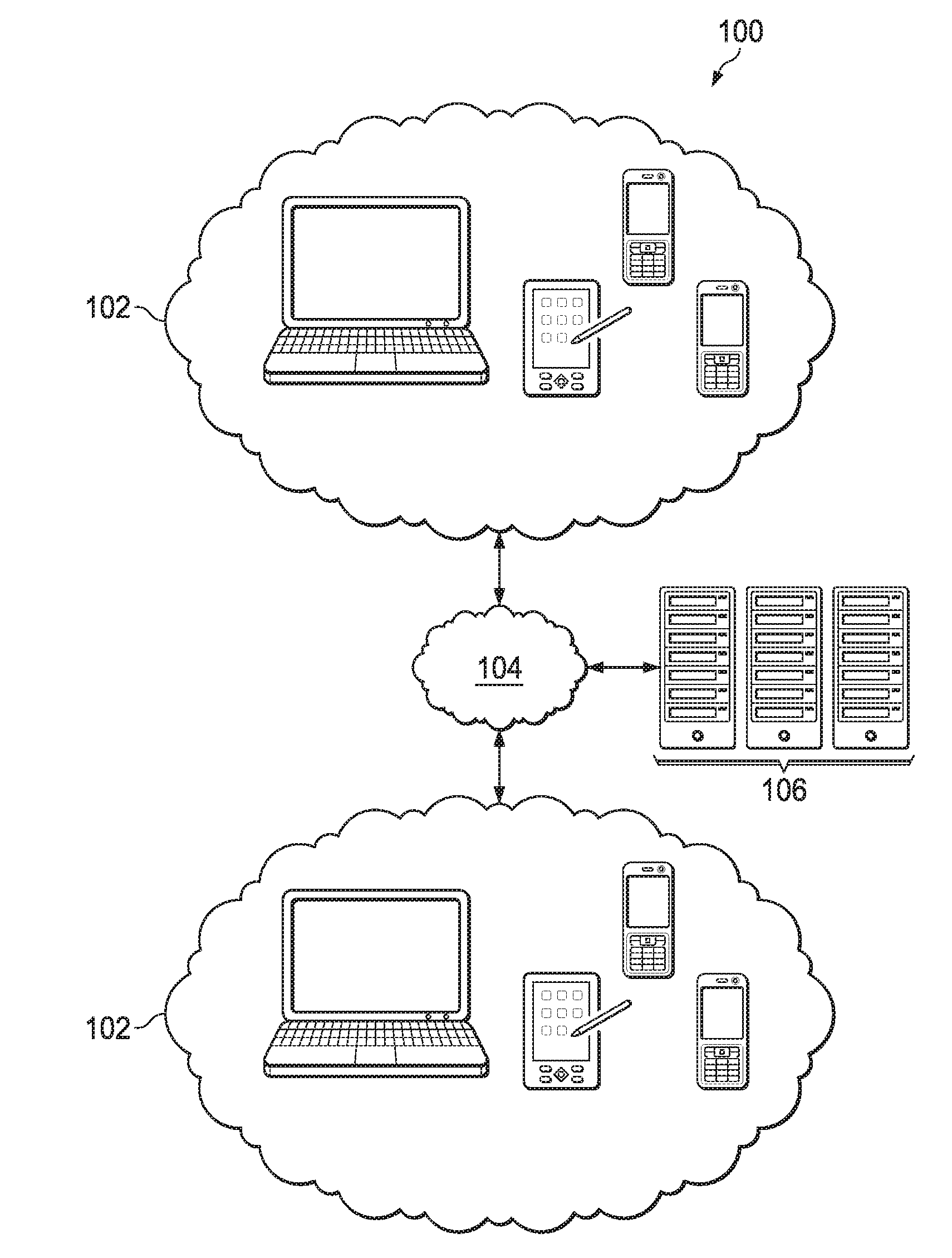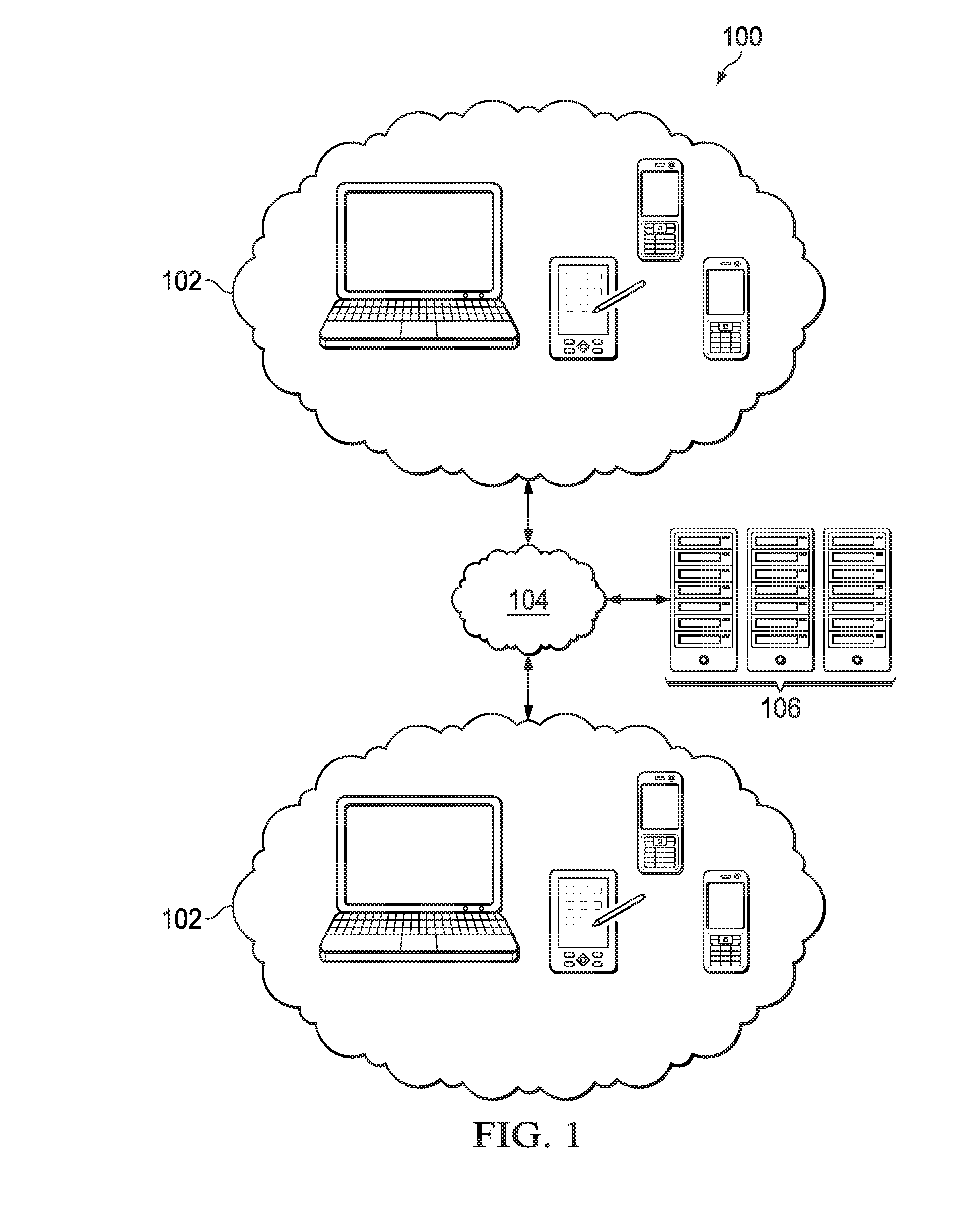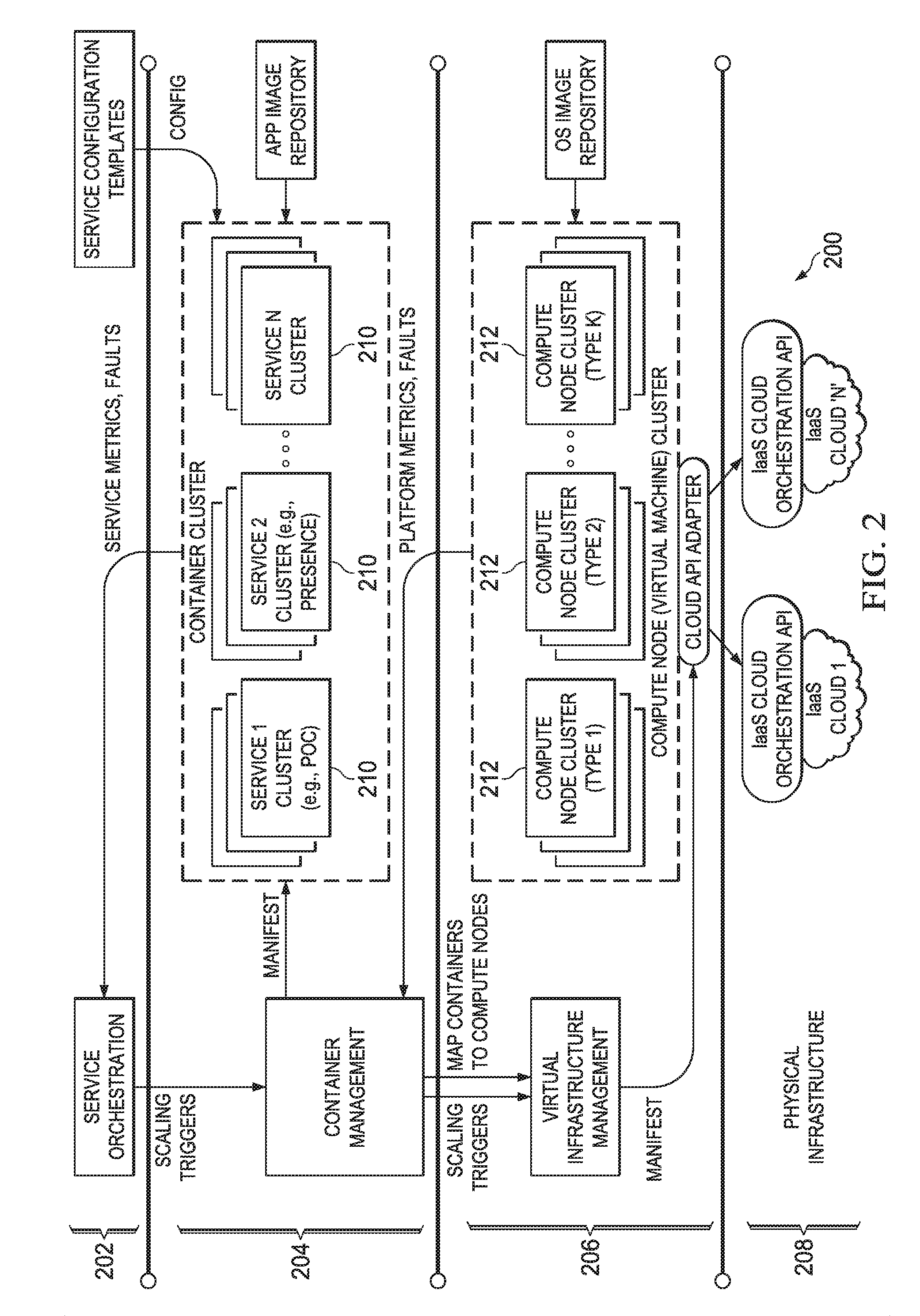System and Method for Elastic Scaling in a Push to Talk (PTT) Platform using User Affinity Groups
a push-to-talk and affinity group technology, applied in the field of communication, can solve the problems of consuming network equipment resources, consuming significant cost in terms of latency and core network resource usage, and unable to realize the benefits of elastic scaling
- Summary
- Abstract
- Description
- Claims
- Application Information
AI Technical Summary
Benefits of technology
Problems solved by technology
Method used
Image
Examples
Embodiment Construction
[0023]The making and using of embodiments of this disclosure are discussed in detail below. It should be appreciated, however, that the concepts disclosed herein can be embodied in a wide variety of specific contexts, and that the specific embodiments discussed herein are merely illustrative and do not serve to limit the scope of the claims. Further, it should be understood that various changes, substitutions and alterations can be made herein without departing from the spirit and scope of this disclosure as defined by the appended claims.
[0024]Various embodiments are described within a specific context, namely, elastic scaling for a push to talk (PTT) system. Various embodiments may, however, be applied to other systems and networks where elastic scaling is desirable.
[0025]Various embodiments provide an architecture for realizing a virtualized, elastically scalable, highly-available, and geographically distributed PTT system that can deployed across one or more deployment sites. Va...
PUM
 Login to View More
Login to View More Abstract
Description
Claims
Application Information
 Login to View More
Login to View More - R&D
- Intellectual Property
- Life Sciences
- Materials
- Tech Scout
- Unparalleled Data Quality
- Higher Quality Content
- 60% Fewer Hallucinations
Browse by: Latest US Patents, China's latest patents, Technical Efficacy Thesaurus, Application Domain, Technology Topic, Popular Technical Reports.
© 2025 PatSnap. All rights reserved.Legal|Privacy policy|Modern Slavery Act Transparency Statement|Sitemap|About US| Contact US: help@patsnap.com



